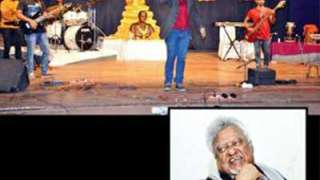MEDIA
FINDING SELF, SEEKING BHIM
Pune Mirror | January 22, 2017
By: Lalitha Suhasini
IIM Ahmedabad academic associate Tushar Meshram on why Marathi Bhim Geet is intrinsically linked to the Dalit identity
Like all folk forms in the country, the Mahar community in Maharashtra has a strong oral tradition of poetry and music. Marathi Bhim Geet, one of the most important musical traditions for the Mahars, which includes songs of praise for Dr Babasaheb Ambedkar and anthems of empowerment, is perhaps the strongest surviving form of protest music in the country. “It was the vehicle for social connection and continues to be used to resist oppression,” says Tushar Meshram, academic associate at IIM Ahmedabad, who will helm a session on contemporary Dalit identity and Marathi Bhim Geet at the music conference, Shabd aur Sangeet, at the FLAME University today.
Born and raised in Bengaluru, Meshram recalls Sundays filled with the sound of Bhim Geet. His father would play these songs at home to sensitise the family to what was happening within the community. “As opposed to popular music, it struck me that these songs were uniformly devoted to Ambedkar and his struggle to fight for equality of the Dalits,” says Meshram.
Over the years, the artistes who express themselves through these songs have changed, but the movement has gained momentum. “Bhim Geet and the poetry of Namdeo Dhasal, and the Ballads of Sambhaji Bhagat are manifestation of the same emotions of Dalit resistance and expression. The element of Dalit pride is significant in the three. Bhagat’s powerful oratory style is unmatched by a lot of the bigger singers today.”
In Ahmedabad, which is riding the Hindutva wave today and where Meshram is now based, it is not surprising that there is no trace of Marathi Bhim Geet. “Almost none, as far as I know,” says Meshram, “There are Ambedkar followers in Ahmedabad, but I am yet to find a musical community within the same, for Marathi.” But Marathi Bhim Geet remains to be a larger phenomenon elsewhere in the country, says Meshram, who is also writing a research paper on the subject. Navi Mumbai-based band Dhamma Wings is a fine example of modern day musicians who have taken to Bhim Geet. “I watched them perform at the Tata Institute in Mumbai and they were received very warmly,” he says.
Another name that young Bhim Geet followers will recognise is Anjali Bharti, who has several songs to her name including ‘Nagpurchi Nagin’ and ‘Bana Aata Bhimkanya’. At first glance, the video for ‘Bana Aata Bhimkanya’, a song that speaks of women empowerment, calls to mind the frame where Sairat’s sassy protagonist, Archie, rides a Royal Enfield to college. Bharti’s motorbike entry in the video is equally impressive. It is when Bharti is seen fighting off men to rescue a group of women that the video, weakened by spoofworthy stunts, takes a comical turn. The fact that music is “seen” than heard is one of the primary reasons why a conference such as Shabd Aur Sangeet, which promotes the study and analysis of song-text in India, is more relevant than ever. Meshram says that singers such as Bharti have been drawing a young, dynamic audience. “Also, it’s fantastic to see more diversity of singers where traditionally there have been male performers,” he adds.
WHEN: Jan 22, 9 am onwards
WHERE: FLAME university, Chanakya Lecture Hall 1, Lavale Open only to students

